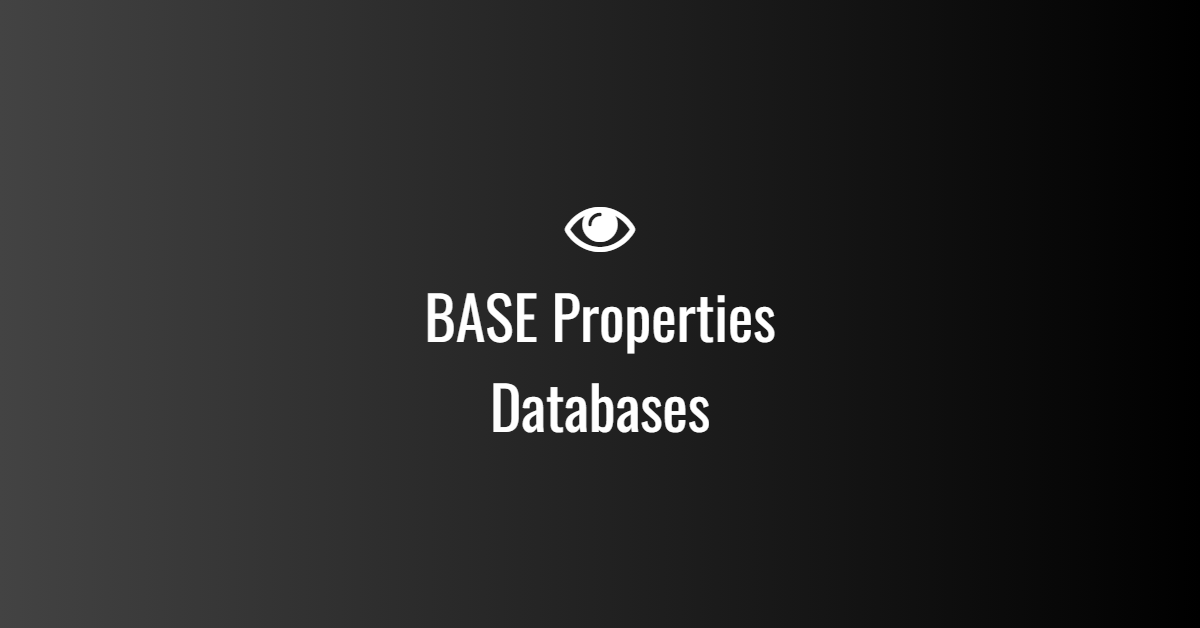
BASE Properties in Databases
Introduction
While ACID properties (Atomicity, Consistency, Isolation, Durability) ensure strong consistency in traditional Relational Databases (RDBMS), modern applications requiring high availability and scalability often use NoSQL databases that follow the BASE properties instead.
BASE stands for:
- Basically
- Available
- Soft-state
- Eventual consistency
Unlike ACID, which prioritizes strict consistency, BASE focuses on availability and performance, making it ideal for distributed systems and big data applications.
Understanding BASE Properties
1. Basically Available
- The system guarantees availability, meaning it always responds to requests, even if some data is outdated or inconsistent.
- Instead of immediate consistency, BASE allows for partial failures while keeping the system operational.
Example:
- In a shopping website like Amazon, product availability might not always be up-to-date. Even if a product is out of stock, users might still see it as available due to delays in synchronization.
2. Soft State
- The system’s state can change over time, even without direct user input.
- Unlike ACID databases, which maintain strict integrity, BASE databases allow temporary inconsistencies that will eventually resolve.
Example:
- In social media feeds (like Facebook or Twitter), users might see slightly different versions of the same post for a short time as the database updates asynchronously.
3. Eventual Consistency
- Instead of enforcing immediate consistency, BASE allows data to be eventually consistent across all database nodes.
- This trade-off improves scalability and system availability.
Example:
- In a distributed database like Cassandra, when a user updates their profile, changes may take a few seconds to reflect across all servers, but eventually, all copies will sync.
Comparison: ACID vs. BASE
| Feature | ACID (SQL Databases) | BASE (NoSQL Databases) |
|---|---|---|
| Focus | Consistency | Availability & Performance |
| Consistency | Strong, immediate | Eventual |
| Availability | Lower during failures | High, even during failures |
| Scalability | Limited | Highly scalable |
| Data Integrity | Strict enforcement | Allows temporary inconsistency |
| Examples | MySQL, PostgreSQL, Oracle | MongoDB, Cassandra, DynamoDB |
When to Use BASE vs. ACID?
| Use Case | Recommended Model |
|---|---|
| Banking & Financial Transactions | ACID (SQL) – Requires strong consistency |
| Social Media, Real-Time Data | BASE (NoSQL) – Prioritizes scalability & availability |
| E-Commerce Inventory | BASE (NoSQL) – Can handle high traffic & eventual consistency |
| Healthcare & Government Records | ACID (SQL) – Ensures strict data integrity |
Conclusion
The BASE model is designed for modern applications where availability and scalability are more important than strict consistency. It is widely used in NoSQL databases powering cloud computing, distributed systems, and big data applications. While ACID databases remain essential for financial and critical systems, BASE databases are ideal for handling high-traffic, real-time applications.




